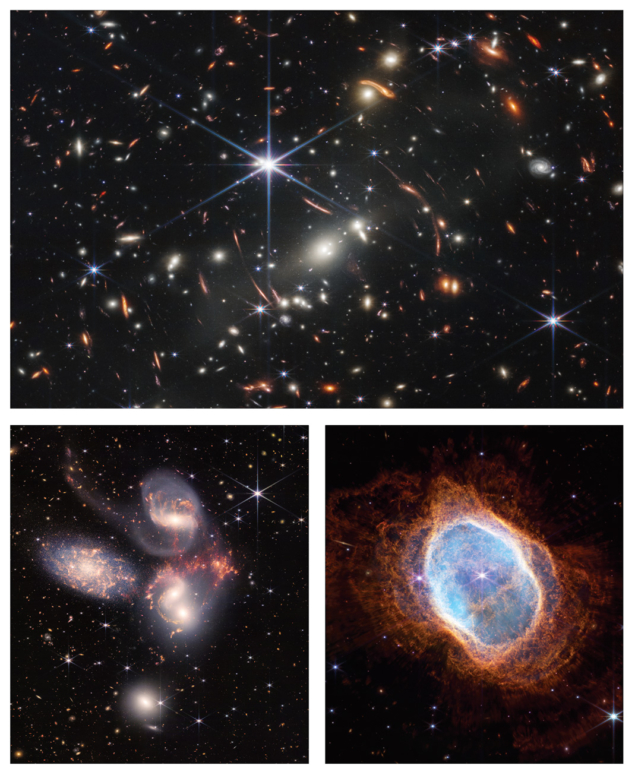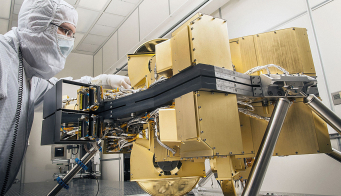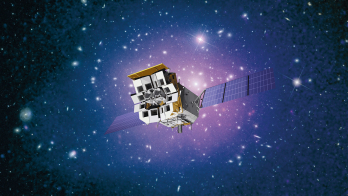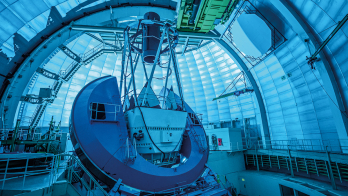
The keenly awaited first science-grade images from the James Webb Space Telescope were released on 12 July – and they did not disappoint. Thanks to Webb’s unprecedented 6.5 m mirror, together with its four main instruments (NIRCam, NIRSpec, NIRISS and MIRI), the $10 billion probe marks a new dawn for observational astrophysics.
The past six months since Webb’s launch from French Guiana have been devoted to commissioning, including alignment and calibration of the mirrors and bringing temperatures to cyrogenic levels to minimise noise from heat radiated from the equipment (CERN Courier March/April 2022 p7). Unlike the Hubble Space Telescope, Webb does not look at ultraviolet or visible light but is primarily sensitive to near- and mid-infrared wavelengths. This enables it to look at the farthest galaxies and stars, as early as a few hundred million years after the Big Bang.
Wealth of information
Pictured here are some of Webb’s early-release images. The first deep-field image (top) covers the same area of the sky as a grain of sand held at arm’s length, and is swarming with galaxies. At the centre is a cluster called SMACS 0723, whose combined mass is so high that its gravitational field bends the light of objects that lie behind it (resulting in arc-like features), revealing galaxies that existed when the universe was less than a billion years old. The image was taken using NIRCam and is a combination of images at different wavelengths. The spectrographs, NIRSpec and NIRISS, will provide a wealth of information on the composition of stars, galaxies and their clusters, offering a rare peak into the earliest stages of their formation and evolution.
Stephan’s Quintet (bottom left) is a visual group of five galaxy clusters that was first discovered in 1877 and remains one of the most studied compact galaxy groups. The actual grouping involves only four galaxies, which are predicted to eventually merge. The non-member, NGC 7320, which lies about 40 million light years from Earth rather than 290 million for the actual group, is seen on the left, with vast regions of active star formation in its numerous spiral arms.
A third stunning image, the Southern Ring nebula (bottom right), shows a dying star. With its reservoirs of light elements already exhausted, it starts using up any available heavier elements to sustain itself – a complex and violent process that results in large amounts of material being ejected from the star in intervals, visible as shells.
These images are just a taste, yet not all Webb data will be so visually spectacular. By extending Hubble’s observations of distant supernovae and other standard candles, for example, the telescope should enable the local rate of expansion to be determined more precisely, possibly shedding light on the nature of dark energy. By measuring the motion and gravitational lensing of early objects, it will also survey the distribution of dark matter, and might even hint at what it’s made of. Using transmission spectroscopy, Webb will also reveal exoplanets in unprecedented detail, learn about their chemical compositions and search for signatures of habitability.








